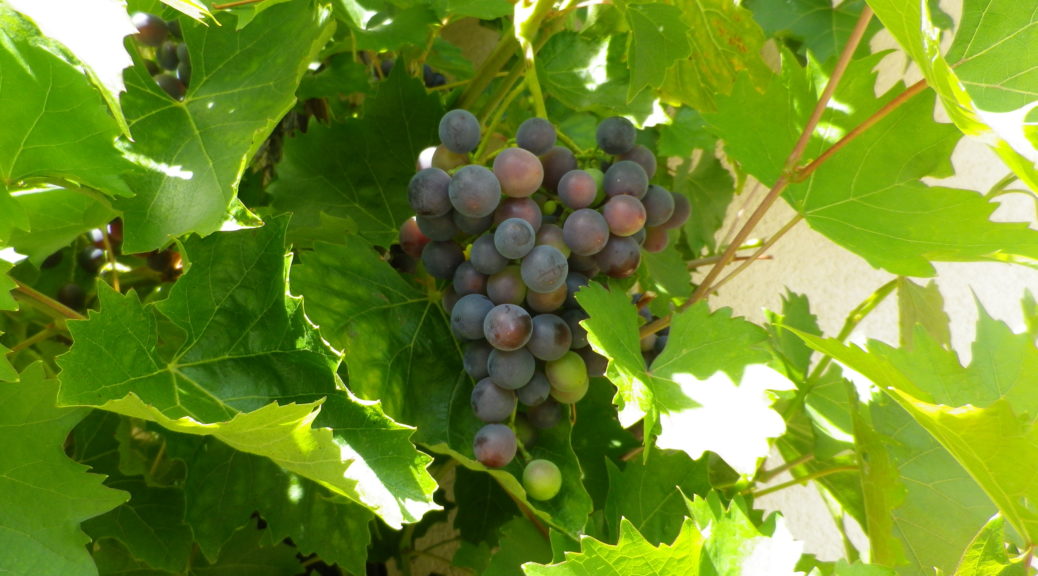What I Learned
The Markgraeflerland district is along the southern-most section of the Rhine as it borders France, in the region of Baden, in the state of Baden-Wuerttemberg, Germany. As many other wine regions in the Rhine River valley, the Romans cultivated and harvested grapes here, and with the start of the Carolingian era, viticulture and viniculture took hold again.
This wine district is the southern-most wine producing district in Germany. It begins in Weil am Rhein, just outside the Swiss city of Basel, and continues north, almost to Freiburg. The vineyards lie on the foothills between the river valley floor, and the Black Forest mountains to the east. About 3000 hectares, and 90 cooperatives, cellars and wine estates are dedicated to the production of this region’s wine, carried out the in villages and small towns that dot this area.
Vineyards of note, roughly arranged south to north include the Weiler Schlipf outside Weil am Rhein, which is dedicated mostly to Pinot Noir. The Oetlinger Sonnhohle in a natural bowl, cultivates the unusual white hybrid grape, the Helios, and the unusual red hybrid grape, the Cabernet Carbon, both developed in Freiburg’s Weinbauinstitut. Documents dating to 767 A.D., mention vineyards in what is now Haltingen’s Stiege vineyards and the area of Binzener Sonnhohle.
The Isteiner Kirchberg, in the town of Istein, once fell under the fiefdom of the bishop of Basel. And for hundreds of years Isteiner vintners sent their “tenth” to him annually. Recently the tradition has revived, with vintners sending bottles labelled “Baseler Staatwein”, with this Isteiner Kirchberg Gutedel now serving as the wine for official city occasions.
Efringer Oelberg is located in Efringen-Kirchen, home to the Bezirkskellerei (the district winery). This south-facing slope has been dedicated to viticulture for over 1000 years. It is known for its Gutedel and Pinot Gris (Grauburgunder) wines.
Further north lies the Mauchener Sonnenstueck, known for red wine, and Auggener Schaef, highly esteemed overall. Ballrechten-Dottingen’s Castellberg, on or near the site of a Roman castell has historical interest. Finally, paling in comparison to the stone age cultural finds that have been made there, is the Ehrenstetten Oelberg, with its 1139 A.D., documented viticultural date.
What I Tasted
2016 Grauburgunder, Muellheimer Sonnhalde, Kabinett, Trocken, Weingut Hans Engler: A dry white wine with medium minus gold color; Nose neutral, with green apple, vanilla, and slight pear flavors; high acidity.
2015 Pinot Noir Rose, (Spaetburgunder Weissherbst), Qualitaetswein, Trocken Bezirkskellerei Markgraeflerland; A dry rose with light salmon color, cherry nose, and cherry and sweet raspberry flavors, very mildly tannic.
2014 Riesling Istein Kirchberg, Trocken, Kabinett, Kalkwerk Istein Nussbaumer: A dry white wine with light gold color; nose with fruit and mineral notes, and spicy and fruity flavors, medium-plus acidity.
2014 Spaetburgunder Rose, Kabinett, Trocken, Weingut H. Schlumberger: A dry red wine with light red color; a spicy nose, and notes of red berries, wood and smoke; very mild tannins.
2013 Blauer Spaetburgunder, Binzener Sonnhohle, Weingut Aenis: A dry red wine with medium minus red color; a cherry and smoky nose, with cherry and smoky flavors; medium tannins.
2012 Chasselas, Qualitaetswein, Trocken, Schlossgut Ebringen: A dry white wine with medium gold color, white stone fruits nose, notes of peach, smoke and vanilla flavors; mild acidity, very refreshing.
2011 Spaetburgunder, Auslese, Trocken, Weingut Josef Walz: A dry red wine with medium red color; nose of red berries, notes of vanilla, honey dried cherries and wood; medium tannins.
2011 Spaetburgunder, Schliengener Sonnenstueck, Qualitaetswein, Trocken, Erste Markgraefler Winzergenossenschaft: A dry red wine with a medium plus red color; a cherry nose with a hint of tobacco, and red berry, smoke and slightly spicy flavors; medium tannins, with a smooth finish.
2011 Spaet Blauburgunder, Auggener Schaef, Qualitaetswein, Trocken: A complex red white wine with light ruby red color, more nuanced and complex flavors, to include some cherry and oak; an intriguing sipping experience.
2012 Pinot Blanc, Laufener Winzersekt “Pinot Brut”, Winzerkeller Auggener Schaef: A dry white sparkling wine with a dark, light gold color and fine, lively bubbles; neutral nose, with yeast and floral flavors; creamy mouthfeel with mild acidity.
Brut, Winzersekt Edelgraefler, Weingut Zaehringer: A dry white sparkling wine with light gold color and fine bubbles; neutral nose, slight notes of citrus; tart finish, medium plus acidity, creamy mouthfeel.
Cremant, Brut, Sekt Kellerei Reinecker (Auggen): A dry, white sparkling wine with fine, lively persistent bubbles, medium minus gold color; fruity nose of ripe red apple, white stone fruit and a hint of smoke; floral and fruity flavors; with high acidity and a medium, tart finish.
